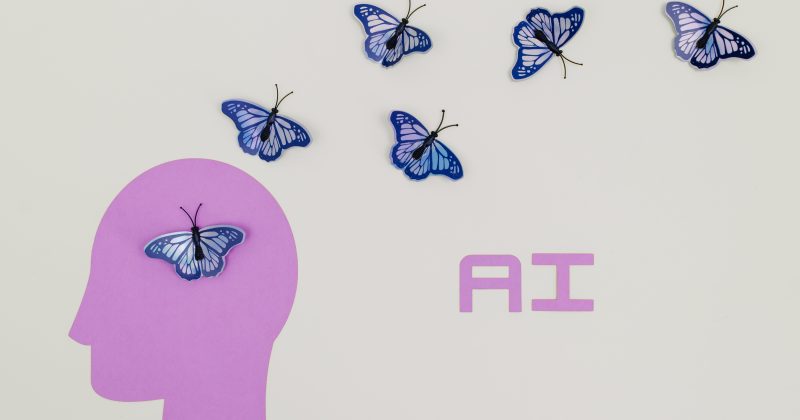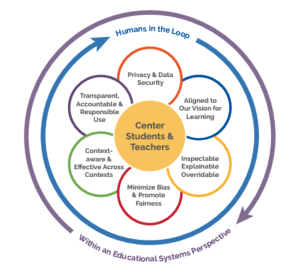Susan O'Rourke | November 15, 2023

This November, UNC World View has artificial intelligence on the mind. With Prof. Arv Malhotra’s lecture “Going ‘Back to the Future’ of Work in the AI Age,” coming up, we were curious about continuing research on the use of artificial intelligence in schools. The report Artificial Intelligence and the Future of Teaching and Learning: Insights and Recommendations from the Office of Educational Technology (published in May 2023) offers insights into the possibilities and limitations of this technology and how to productively integrate it into learning while still fostering students’ critical thinking and communication skills, creativity, and independence.
The report outlines how AI has changed the way educators and students see technology functioning in their classes and provides a few key takeaways:
- “AI enables new forms of interaction. Students and teachers can speak, gesture, sketch, and use other natural human modes of communication to interact with a computational resource and each other. AI can generate human-like responses, as well. These new forms of action may provide supports to students with disabilities.”
- “AI can help educators address variability in student learning. With AI, designers can anticipate and address the long tail of variations in how students can successfully learn—whereas traditional curricular resources were designed to teach to the middle or most common learning pathways. For example, AI-enabled educational technology may be deployed to adapt to each student’s English language abilities with greater support for the range of skills and needs among English learners.”
- “AI can enhance feedback loops. AI can increase the quality and quantity of feedback provided to students and teachers, as well as suggesting resources to advance their teaching and learning”
However, the report also recognizes that there are concerns regarding AI’s development, possible biases, and misuse that need to be accounted for. The report explains that “AI increases risks already present in educational technology, especially data privacy and security. AI adds new risks of algorithmic discrimination due to unwanted patterns in existing data and unfair automated decision-making.”
Thus, officials are examining how a “Blueprint for an AI Bill of Rights” can serve as “a sound starting place for investigating the potential risks in particular AI systems, especially …. [those] that may arise in educational settings.”

Officials ultimately affirm the importance of “humans-in-the-loop” and that teachers are foundational to education and integral to the process of determining AI’s contributions to students’ learning experiences.
We continue to remain curious about the development of this technology!
